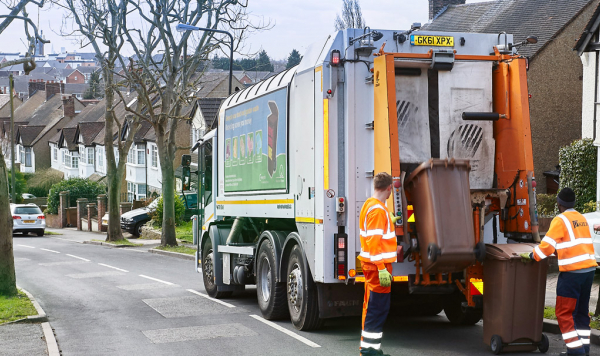Request
| I am writing to you on behalf of the above constituent who has written to me regarding her concerns about the plans to rebuild the Edmonton incinerator. Concern regarding the North London Heat and Power Project's close proximity to residents in a highly populated area, especially considering the important role recycling can have in reducing the need to use an incinerator. In light of this are other waste management options available? |
Response
Key Points on Energy Recovery
North London Heat and Power Project
We are leading the way on managing waste and recycling by:
• Basing the facility on achieving an ambitious 50% recycling target, but if we exceed this and reduce waste then we’ll be able to take in waste from other local authorities
or businesses.
• Providing a sustainable way of managing up to 700,000 tonnes of north London’s waste that can’t be recycled over the coming decades.
• Following the example of the most environmentally-advanced countries in Europe, including Germany and Belgium, who recycle over 50% of their waste and recover a
large part of the rest in energy-from-waste facilities.
• Recycling around 190,000 tonnes of our residents’ waste each year (including garden and food waste, as well as standard mixed recycling), as well as repurposing around
18,500 tonnes of metal and 89,000 tonnes of ash, re-using the ash to make roads, pavements and construction material.
Our award-winning waste prevention programme, which saves 10,000 tonnes of resources going to waste each year.
We are tackling the Climate Emergency by:
• Already diverting 21 million tonnes of waste that would have otherwise gone to landfill since Edmonton EcoPark opened in 1971. That’s equivalent to the weight of more than 1.6 million London buses.
• Using energy from waste to reduce emissions of landfill-generated methane, which is a highly-damaging greenhouse gas 28 times more potent than carbon dioxide.
• Saving the equivalent of 140,000 tonnes of carbon dioxide each year by diverting waste from landfill. That’s like taking 60,000 cars off the road each year.
• Designing the facility to provide heat, which gives us cleaner energy with carbon efficiency rates at 25% better than the Mayor of London’s target (known as the Carbon
Intensity Floor target, which ensures that energy generated from waste activities is no more polluting in carbon terms that the energy source it replaces).
Energy from waste sector–climate change snapshot
• Nationally,thewasteindustryrepresentsaround4.0%ofgreenhousegasemissions.The vast majority of these emissions are from landfill sites, with less than 0.05% of the national figure being from waste incineration. Source: Dept. for Business, Energy & Industrial Strategy,2017.
• Even in Greater London, where landfill is much less common, waste incineration represents only 0.76% of total carbon dioxide emissions. This compares to 28.1% from road transport. Source: London Atmospheric Emission Inventory report prepared for the Greater London Authority.
• The Committee on Climate Change states that the waste sector is the only UK industry to outperform its‘ carbon budget’ obligations, which means carbon levels are reducing much faster than targeted. Source: Net Zero, May2019.
We are improving air quality by:
Operating within one of the most tightly-regulated industries in Europe and providing ongoing monitoring to the Environment Agency.
• Designing the facility to perform better than known and anticipated emissions standards required for energy recovery facilities, meaning the facility will always meet Environment Agency’s strict standards as they change over time.
• Being the first facility in the UK to invest in cutting-edge technology for nitrogen oxide removal (Selective Catalytic Reduction)to deliver one of the safest and cleanest facilities in the country to ensure there is no harm to public health.
• Helping to clean up north London’s air by operating at 60% better than the Environment Agency’s safe standards.
• Controlling emissions so they are undetectable from the levels already present in the air.
Energy from waste sector – air quality snapshot
• Energy from waste makes up a very small percentage of total PM10 and PM2.5 particulate emissions in the UK (just 0.03% / 0.05%), which compares to much higher figures for traffic (5.35% / 4.96%) and household wood burning (22.4% / 34.3% ). Bonfire night in 2015 produced 10 times more dioxins than energy from waste across the whole year. Sources: The Environment Agency and Environmental Services Association.
• Energy from waste plants are a very small source of nitrogen oxide in the UK, giving rise to 1.12% of emissions compared to 33.5% from traffic. Source: The Environment Agency.
We are delivering a project for the community by: Generating 78 megawatts of power from waste which can supply electricity and heat for up to 127,000 homes.
• Treating waste as one of the largest waste authorities in the UK for over 2 million residents, using the best and most-environmentally sound method possible.
• Creating over 2,500 job opportunities during construction and operation, further boosting the local economy.
• Supporting an impressive training programme for over 100 apprenticeships and 225 skills training opportunities for the local community.
Contact us: info@northlondonheatandpower.london | 020 8489 3940


